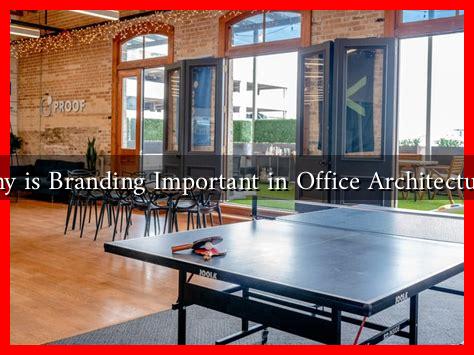-
Table of Contents
- Why is Branding Important in Office Architecture?
- The Intersection of Branding and Office Design
- Case Studies: Successful Branding Through Office Architecture
- 1. Google: Innovation and Creativity
- 2. Airbnb: Home Away from Home
- The Psychological Impact of Office Branding
- Best Practices for Integrating Branding into Office Architecture
- Conclusion
Why is Branding Important in Office Architecture?
In today’s competitive business landscape, branding extends beyond logos and marketing strategies; it permeates every aspect of a company, including its physical workspace. Office architecture plays a crucial role in shaping a brand’s identity and influencing employee productivity, client perceptions, and overall company culture. This article explores the significance of branding in office architecture, highlighting its impact on various stakeholders and providing insights into best practices.
The Intersection of Branding and Office Design
Branding in office architecture refers to the integration of a company’s values, mission, and identity into the physical workspace. This intersection is vital for several reasons:
- First Impressions Matter: The design of an office space is often the first point of contact for clients and visitors. A well-branded office can create a lasting impression, reinforcing the company’s image and values.
- Employee Engagement: A thoughtfully designed workspace can enhance employee morale and productivity. When employees feel connected to their company’s brand, they are more likely to be engaged and motivated.
- Attracting Talent: In a competitive job market, a unique and appealing office environment can attract top talent. Companies that invest in their office design often stand out to potential employees.
Case Studies: Successful Branding Through Office Architecture
Several companies have successfully integrated branding into their office architecture, demonstrating the positive impact on their business outcomes.
1. Google: Innovation and Creativity
Google’s offices are renowned for their innovative design, featuring open spaces, collaborative areas, and vibrant colors that reflect the company’s playful and creative culture. The architecture not only embodies Google’s brand but also fosters collaboration and creativity among employees. According to a study by the Forbes Human Resources Council, companies like Google have seen a significant increase in employee productivity due to their engaging work environments.
2. Airbnb: Home Away from Home
Airbnb’s office design reflects its brand ethos of belonging and community. The company’s headquarters in San Francisco features a design that mimics a home environment, complete with communal spaces and cozy nooks. This approach not only reinforces Airbnb’s brand message but also creates a welcoming atmosphere for employees and visitors alike.
The Psychological Impact of Office Branding
Branding in office architecture also has psychological implications. A well-branded office can:
- Enhance Brand Recognition: Consistent branding throughout the office space helps reinforce the company’s identity, making it more recognizable to clients and employees.
- Foster a Sense of Belonging: When employees see their values reflected in their workspace, it fosters a sense of belonging and loyalty to the company.
- Encourage Collaboration: Open and branded spaces can encourage teamwork and collaboration, essential for innovation and problem-solving.
Best Practices for Integrating Branding into Office Architecture
To effectively integrate branding into office architecture, companies should consider the following best practices:
- Define Your Brand Identity: Clearly articulate your brand values and mission to guide the design process.
- Involve Employees: Engage employees in the design process to ensure the space reflects their needs and preferences.
- Use Consistent Branding Elements: Incorporate brand colors, logos, and messaging throughout the office to create a cohesive environment.
- Prioritize Functionality: Ensure that the design not only looks good but also serves the practical needs of employees.
Conclusion
Branding in office architecture is not merely an aesthetic choice; it is a strategic decision that can significantly impact a company’s success. By creating a workspace that reflects its brand identity, a company can enhance employee engagement, attract top talent, and leave a lasting impression on clients. As demonstrated by industry leaders like Google and Airbnb, the integration of branding into office design can lead to increased productivity and a stronger company culture. In an era where the workplace is evolving, investing in branded office architecture is essential for businesses looking to thrive.

